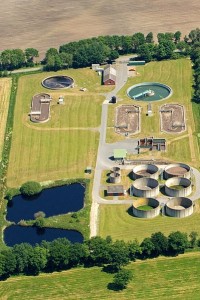
Is sand filtration out of date? If not, what are its advantages?
Waste water received by a treatment plant must be processed several ways before it is sent to the sand filter, disinfected and discharged to the environment. Large objects and grit are first removed. Treatment to remove nitrogen and phosphorous follows. Suspended solids are digested and removed.
The waste water is next aerated, allowed to settle and then pumped to the sand filter. Sand filtration blocks tiny particles. A separate layer of activated carbon may be included in the sand filter.
Sand Filtration Operation
Particle removal features two mechanisms. Particles larger than the gaps between grains of sand are blocked. Many smaller particles are absorbed upon the sand. Sand, or silica, absorbs polar substances, including any remaining trace nutrients. The carbon layer removes non-polar substances responsible for bad odor and taste. Following sand filter treatment, waste water goes through disinfection and release to the environment.
Some larger waste water treatment plants do not use sand filtration, but it is inexpensive and works well at the more modest-sized facilities where it is employed.
Note: You might also enjoy Novel Wastewater Treatment – Reducing Nitrogen and Phosphorous
References:
- Minnesota Rural Water Association: Filtration
- City of York, Pennsylvania: Sand Filtration
- Mountain Empire Community College: Disinfection of Wastewater
- Department of Ecology – State of Washington: Water Treatment Plants
- Los Angeles Sewers: Hyperion Wastewater Treatment System
